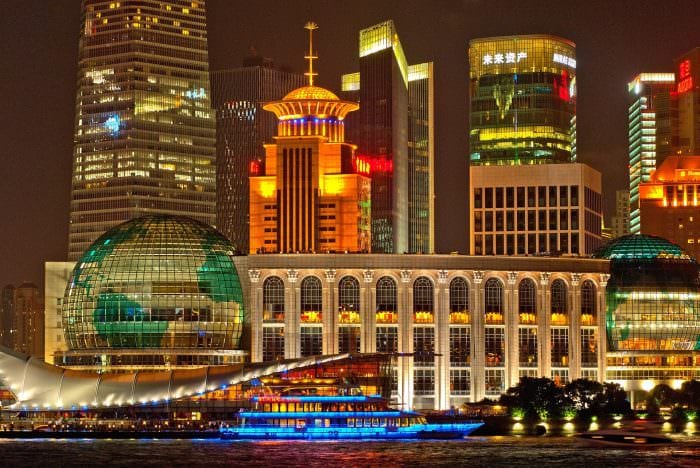How to gain visibility in China's digital marketplace
Everyone wants a piece of the emerging market's pie, and the biggest slice is still China. After a temporary retreat, overall economic growth in China is expected to continue its upward trend, and retail momentum is keeping pace.
While American companies focus most of their attention on first-tier Chinese cities, lower-tier cities in China are about to have their day in the sun. According to Jing Daily, cities such as Changsha, Foshan, and Wenzhou will be home to more high-income consumers than Beijing by 2030.
Download our Bussiness Member Resource – China Digital Marketing Strategy Guide
Our China Marketing Strategy Guide is a complete guide to help you understand China’s digital marketing landscape. This guide will give you a better understanding of China’s biggest online marketing channels and how they operate.
Access the China digital marketing strategy guide
If you’re looking to expand into China, you might just be able to achieve faster growth with less competition by focusing on lower-tier markets first.
Why Tier-One Isn’t Always the Answer
Brands have long believed the greatest opportunities lie in tier-one cities like Shanghai and Guangzhou. This is an understandable misperception — tier-one cities have traditionally been larger ports for foreign trade and have the most developed retail presence, too.
Shanghai was one of the first economic free trade zones when Deng Xiaoping opened China's doors in the early '80s. In reality, tier-one cities are already familiar stomping grounds for international brands at this point.
The challenge in tier-one markets is breaking into a large, saturated region that is highly fragmented. This is why many of our clients come to us and say, “Even if we crack Shanghai, we’ll be happy.”

When one of Australia’s largest dairy producers came to us with that exact challenge, for example, we worked on building a proposition with a very particular target segment in mind among first-tier markets. By conducting a comprehensive attitudinal and usage study, we identified a range of consumer segments. What we found was that half of Chinese consumers actually prefer local brands. So, if your goal is to find a niche there, you’ve already lost half of the city with your foreign positioning.
The challenge is to figure out the best approach to the remaining half of consumers. In spite of the aforementioned fragmentation, can one brand suit all of these consumers’ needs across China?
For many foreign players, discovering the commonalities in what the remaining half of Chinese consumers find appealing seems like an impossible task. Where do they shop? What do they look for? And how can you tailor a brand for these segments exclusively, rather than merely building a brand and product “for China”?
The ever-evolving needs of various demographics in highly populated Chinese cities are becoming more and more difficult to parse. People living in these massive metropolises are bombarded by thousands of ads every day. Unless you offer a truly original, mind-blowing product, you will find it difficult to cut through the noise.
Further, operating in tier-one markets is more expensive than ever. Salaries in Shanghai already rival those in the West, so the support you’ll need in the area to connect your brand with local consumers will require a steep investment.
Although the familiarity of Shanghai and Beijing continues to appeal to Americans, you can find a good place to launch your foray into Chinese retail by stepping down a tier or two and focusing on less saturated markets that may just offer up a lot more potential.
The Tier-Two Gold Mine
Research from McKinsey shows that discretionary spending categories in China will see 13.4 percent growth between 2010 and 2020, the strongest of all categories. And most of that growth will occur in tier-two cities.
According to Morgan Stanley, tier-two Chinese cities alone will reach $9.7 trillion in spending power by 2030, matching the historical spending power of the entire country in 2015. This immense boost in disposable income is a good sign that consumer goods, in particular, have a bright future in China.
Finally, tier-two areas are facilitating smart growth to accommodate new business. Whereas tier-one cities have already laid-out infrastructures, tier-two cities are revamping their foundations with more modern infrastructure, urban planning, and forward-thinking design. Why wouldn’t a young company prefer a city with a greater untapped market, more reliable internet and communications, and lower production costs?
How to Enter China’s Tier-Two Market
Do you see a future for your business in China? If so, these strategies will help you enter the tier-two market and claim your share of this momentous growth.
1.Prioritize cultural awareness and maintain transparency.
The only way to become aware of a culture is to immerse yourself in it. By getting over to China to observe and spend time with local residents of tier-two Chinese cities at home, at work, out shopping, and in social settings, you will learn much more about how to succeed than you would researching from across the globe.
If you want to create a brand with a positive local reputation in China, Danish brewer Carlsberg provides a great example of how to achieve that by actually spending time and finding the right opportunities within the local markets.
Although Carlsberg had a strong presence in tier-one cities, for instance, it knew the same approach would not work as well in tier-two. After a global repositioning of its flagship brand, the Carlsberg group focused on rejuvenating one of its premium brands, Tuborg, in key lower-tier markets across China by establishing Tuborg with the local culture.
Today, Tuborg plays a larger strategic role in the company’s portfolio by enabling the brand to successfully tap into the local consumer mindset.
2.Utilize both local tech and global social media
To speak to new audiences in China without sacrificing your existing brand message, you can still communicate via locally relevant channels while maintaining your brand presence on social media.
Smartphones have penetrated the Chinese market just as they have in the West, and young Chinese consumers, in particular, are positioned to consume advertisements on local platforms in lower-tier cities as well. What’s more, they’ll be keen to engage with campaigns that are content-driven and tell the company’s unique story in both verbal and visual formats.
By marketing on local apps in spaces where Chinese consumers spend their leisure time, you can reach a new audience while leveraging your existing brand presence, pointing them to your global social media pages and taking advantage of your established brand.
3.Deliver products through existing local infrastructures
You don’t need to make massive investments in new infrastructure to succeed in a new market if you take advantage of local third-party platforms.
For example, rather than attempt to build a new empire in a new region from scratch, French dairy giant Danone joined forces with an existing giant in China — Mengniu. Instead of going head-to-head with a local dairy competitor, the Danone/Mengniu partnership actually benefits both sides. Danone has dairy processing expertise, which is valuable for Mengniu. And Danone now benefits from tapping into Mengniu’s distribution network in lower-tier cities.
You don’t have to rent an office space in Beijing to start competing in China. By following these strategies and focusing on tier-two cities, you can expand into new markets quickly and start building your brand offshore.

Thanks to Andrew Kuiler for sharing his advice and opinion in this post. Andrew is CEO of
The Silk Initiative, China’s only specialized food and beverage (packaged goods and retail) brand strategy and insights consultancy. Andrew is a China consumer, food, and beverage/FMCG expert with experience developing market entry, brand, product, and pack strategies for more than 15 years. He started his career in Australia and later spent nine years working in Shanghai and five years in New York. TSI’s most notable clients include Campbell’s, PepsiCo, Arla, Vita Coco, Mars Wrigley, and Tyson Meats. Andrew sits on the Food, Beverage, and Agriculture Committee for the Australian Chamber of Commerce Shanghai and is a regular guest speaker and consultant to various government and trade association groups. You can connect with him on
LinkedIn.





 Thanks to Andrew Kuiler for sharing his advice and opinion in this post. Andrew is CEO of
Thanks to Andrew Kuiler for sharing his advice and opinion in this post. Andrew is CEO of 



